“Hanbok is more than a traditional garment for Koreans; it is a cultural heritage that embodies the spirit and way of life. It is truly incredible that the timeless beauty of hanbok—rooted in our traditions and aesthetic values—continues to capture the attention of audiences around the world today” said Kim Chang Ki, Director of the Korean Cultural Center Nigeria.
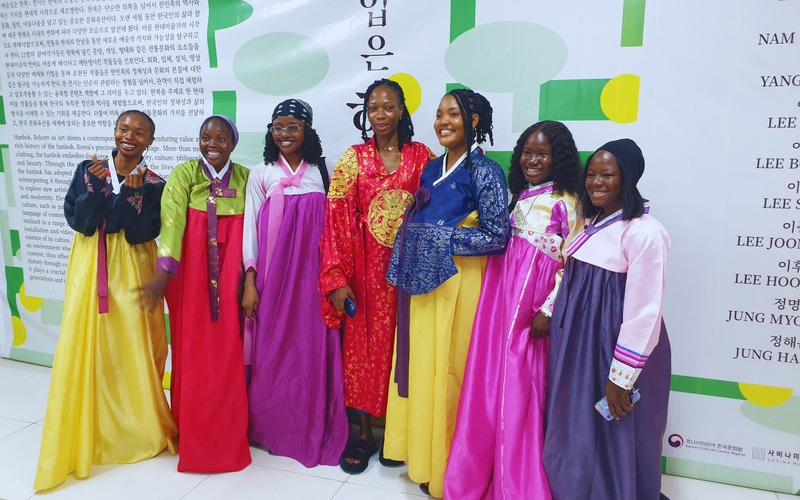
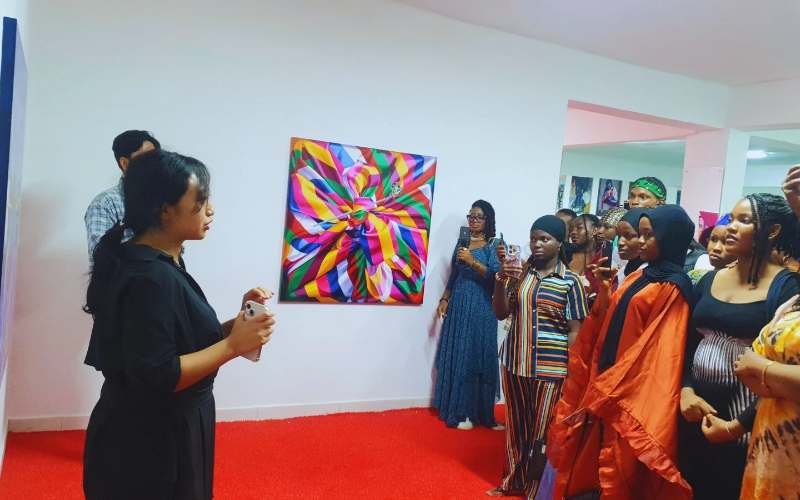
The Korean Cultural Center Nigeria hosted the "Hanbok Reborn as Art" exhibition, which opened on May 9th at the Nike Exhibition Gallery in Abuja, Nigeria. Showcasing traditional Korean hanbok reimagined as modern art, the exhibition offered art lovers and cultural enthusiasts a unique opportunity to experience the beauty of Korean culture. Through a diverse range of artistic expressions, eleven participating artists reinterpreted traditional Korean elements, infusing hanbok-inspired patterns, colors, and shapes with modern creativity.
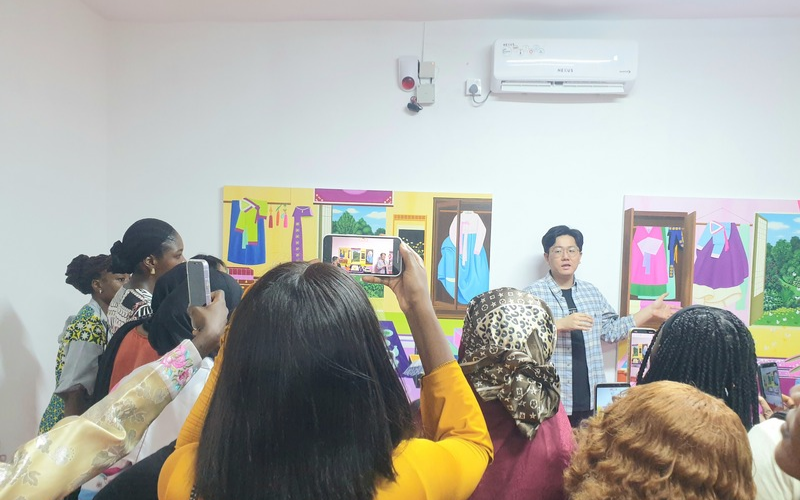
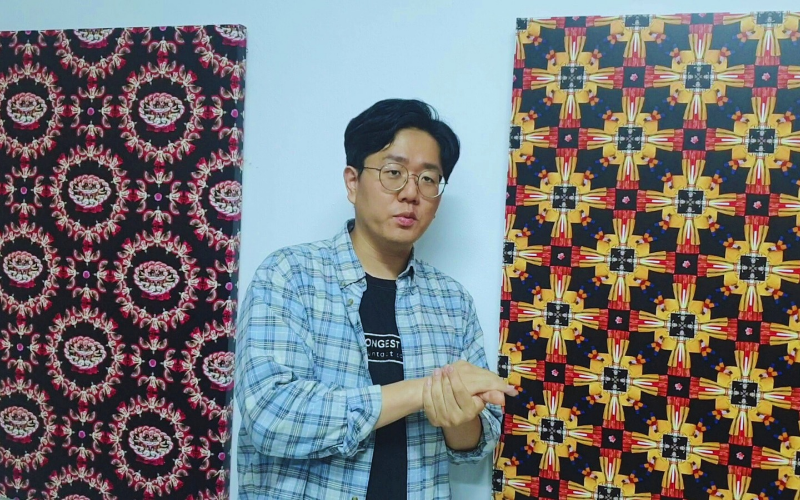
Our guide through this innovative exhibition was Han Sang Ik, Curator from South Korea, representative of the Savina Museum of Contemporary Art, together with Event Manager and Interpreter Lee Yun Jin of KCCN. They provided valuable insights into the artworks and the cultural significance of hanbok.
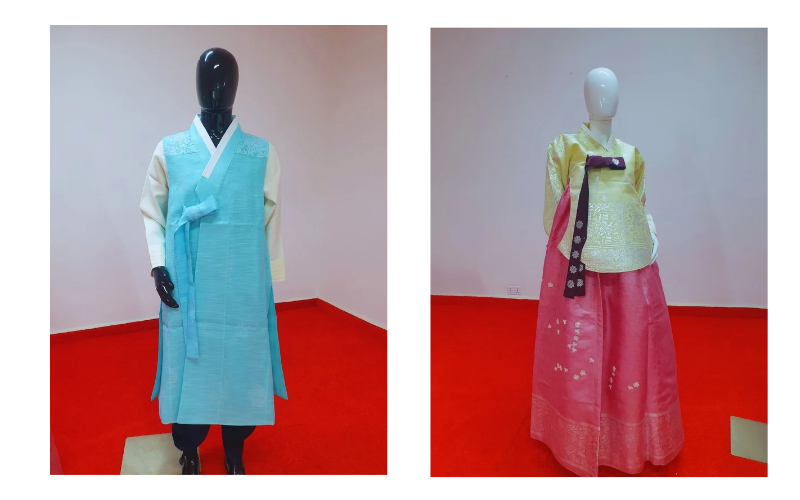
As guests stepped into the exhibition, they were immediately struck by "Ceremonial Robe (Soryebok & Yebok)," a visually stunning artwork that invited exploration. Master craftsman Lee Bong Lee recreated traditional Korean ceremonial attire, Soryebok, using ancient techniques and materials. Inspired by Joseon Dynasty court costumes, the pieces feature intricate embroidery with symbolic motifs representing blessings, longevity, fertility, and more. The guests were impressed by the intricate embroidery, a decorative craft art that involves meticulously stitching patterns onto fabric using threads of various colors, entirely handmade with precision and care.

Another colorful art piece that captured attendees' attention was "The Precious Message." Artist Kim Si Hyun reimagines traditional Korean bojagi (wrapping cloths) in a contemporary context, drawing inspiration from saekdong patterns found in hanbok. Did you know that bojagi has been used for centuries not only for wrapping gifts but also for storing and transporting goods? The artist's work showcases the flexibility and inclusivity of bojagi and hanbok, using the Kimsasil technique to create pieces that transcend visual art and serve as a medium for cultural communication. The saekdong patterns convey wishes for happiness and health, highlighting the significance of these traditional elements in modern times. The art piece struck a chord with Mohammed, an attendee, who recognized the traditional Korean motifs from various Korean movies and dramas he'd enjoyed.
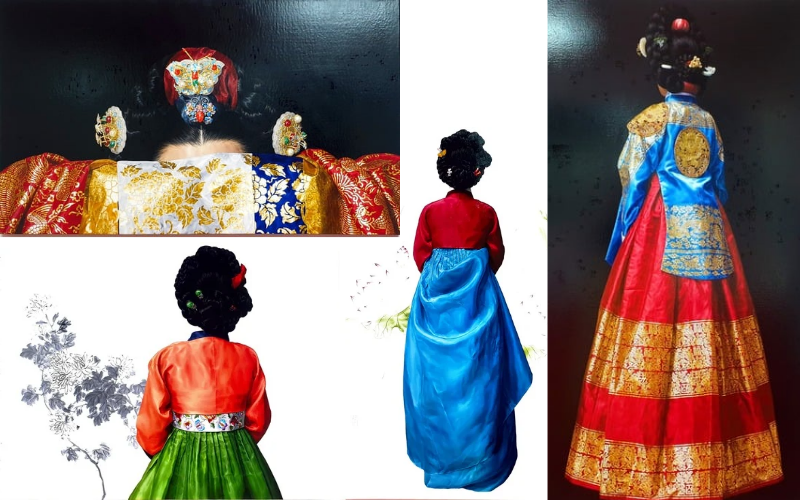
One piece stood out as a favorite: "The Playground" and "The Paradox of Beauty," attracting numerous attendees, particularly females, who couldn't resist taking photos in front of it. Artist Jung Myoung Jo showcases hyperrealistic paintings of women wearing hanbok from behind, highlighting the intricate details of the traditional clothing and accessories. Despite the restrictive social norms of the Joseon period, women expressed their desires for fertility, good fortune, and beauty through subtle means, such as ornaments on their topknots and hanbok patterns.
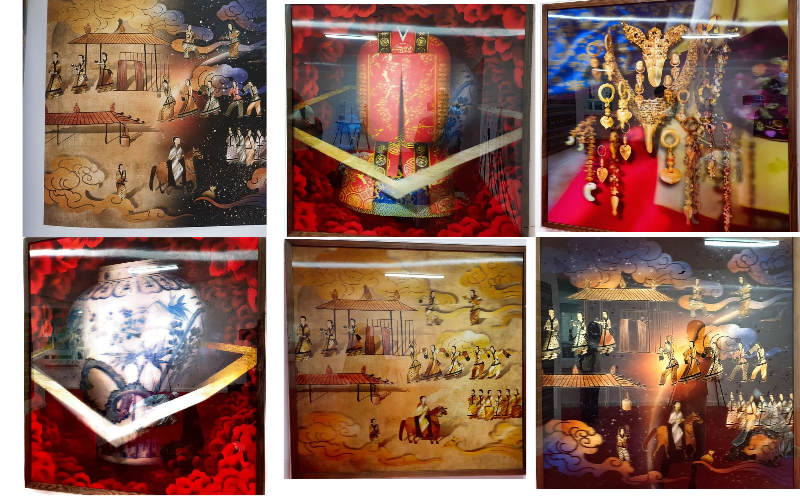
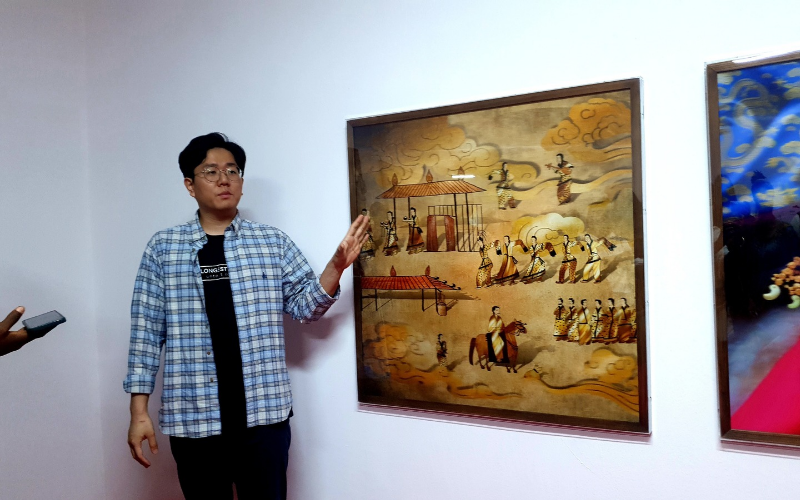
Another artwork that got most attendees amused was the three-dimensional, motion-rich experience created by Lee Do Ha's use of lenticular technique. By combining historical images of hanbok and cultural artifacts with cosmic backgrounds and geometric shapes, the artist showcased the continuity of Korean culture across time and space. This innovative piece demonstrated that hanbok is not just a relic of the past but a living cultural heritage that persists into the present and future.
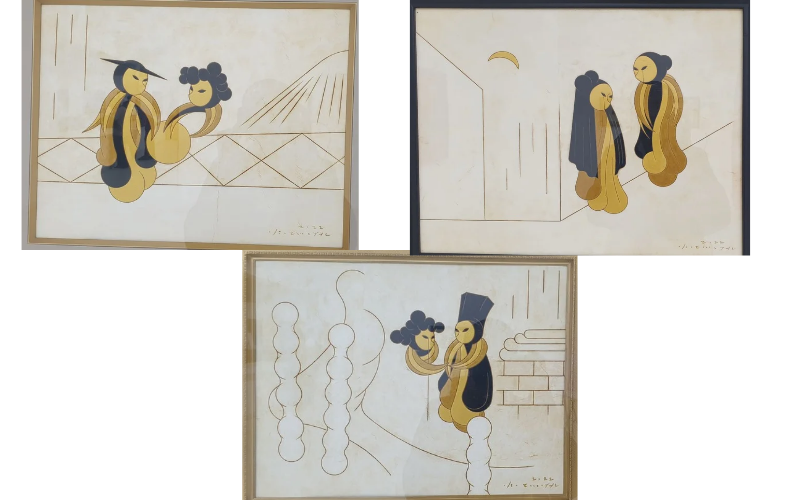
Have you ever stood before an artwork that spoke directly to your soul, its beauty and emotion resonating deeply without needing words? Yang Dae Won's captivating piece features two lovers, their tender moment frozen in time, inviting viewers to step into their world. This artwork masterfully captures the essence of love through the intricate details of hanbok, evoking a sense of nostalgia and intimacy. The way Yang Dae Won combines curvilinear features with straight lines symbolizing tears adds a poignant layer to the piece, highlighting the complexities of love.
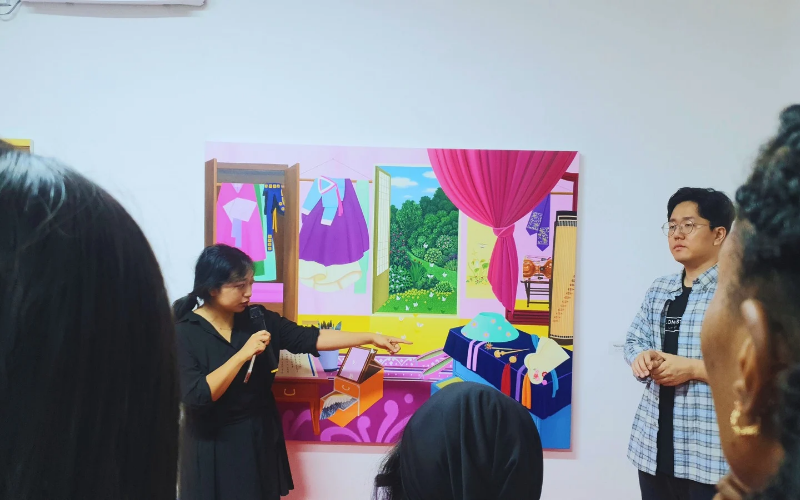
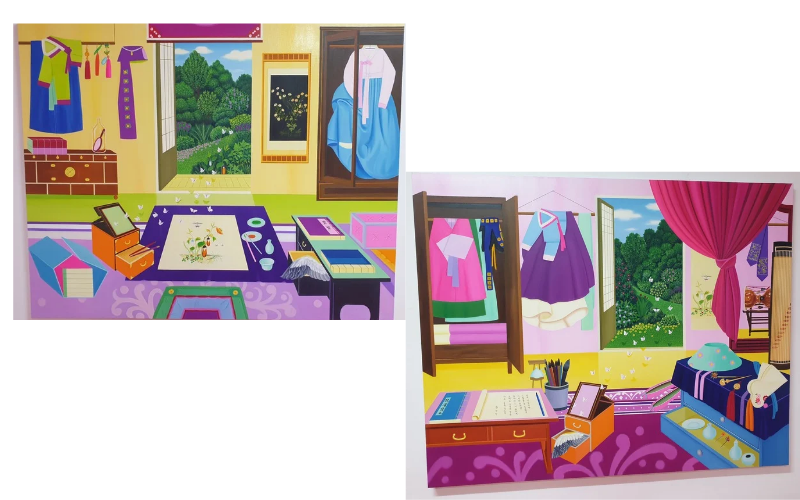
Beautiful pieces by Artist Nam Kyung Min pay tribute to two remarkable women artists of the Joseon Dynasty: Hwang Jini, a gisaeng and poet, and Shin Saimdang, a painter and mother of a renowned Confucian scholar. Through intricately arranged settings, Nam Kyung Min showcases the contrasting lives and artistic pursuits of these women. The artwork highlights their determination, self-reflection, and dreams despite societal constraints and challenges faced by women artists.
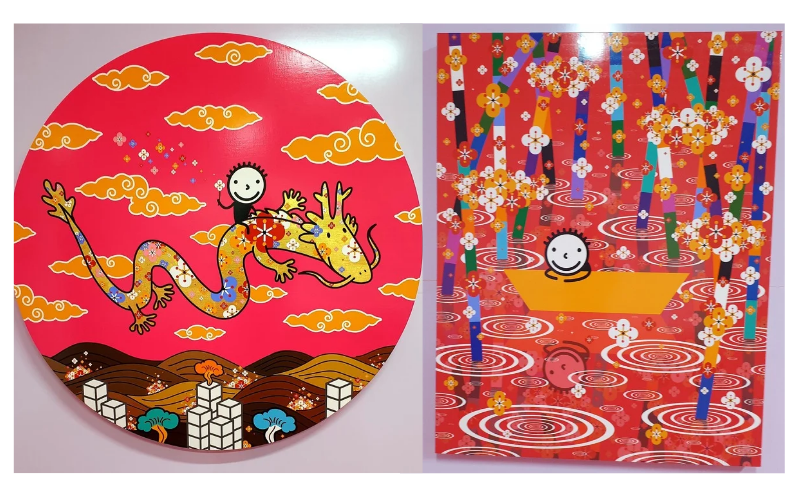
Artist Kwon Ki Soo reinterprets traditional East Asian painting elements in a contemporary context, conveying messages of hope and positivity. His works feature the character "Dongguri" with a smiling face, symbolizing a positive outlook on life. Inspired by hanbok elements like hyungbae and daenggi, Kwon Ki Soo's pieces blend traditional techniques with modern design, incorporating Korean five-color schemes, gold leaf, and silk embroidery. The artwork conveys hope, self-esteem, courage, and energy to overcome challenges
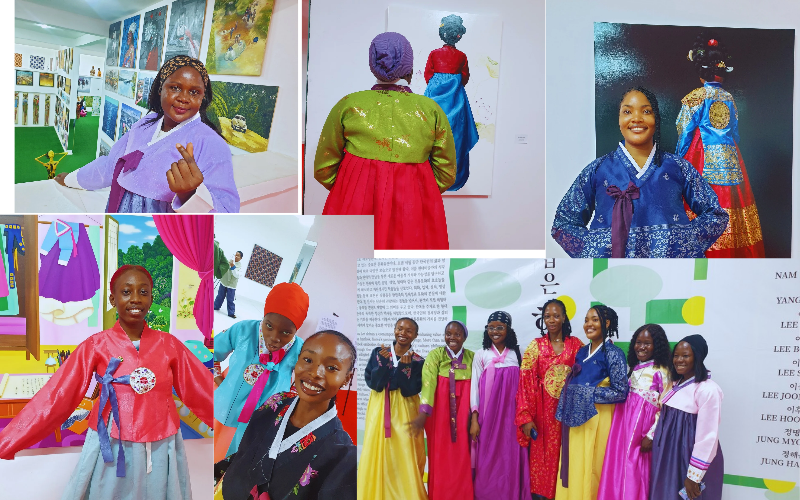
Hanbok Reborn as Art exhibition was a resounding success, showcasing the timeless beauty of Korean hanbok and its relevance in modern times. The event highlighted the universal language of art, bridging cultural divides and fostering global understanding. As the exhibition came to a close, attendees left with a deeper appreciation for Korean culture and its rich heritage, paving the way for future cultural exchanges between Korea and Nigeria.
How about this article?
- Like7
- Support1
- Amazing7
- Sad0
- Curious0
- Insightful1


